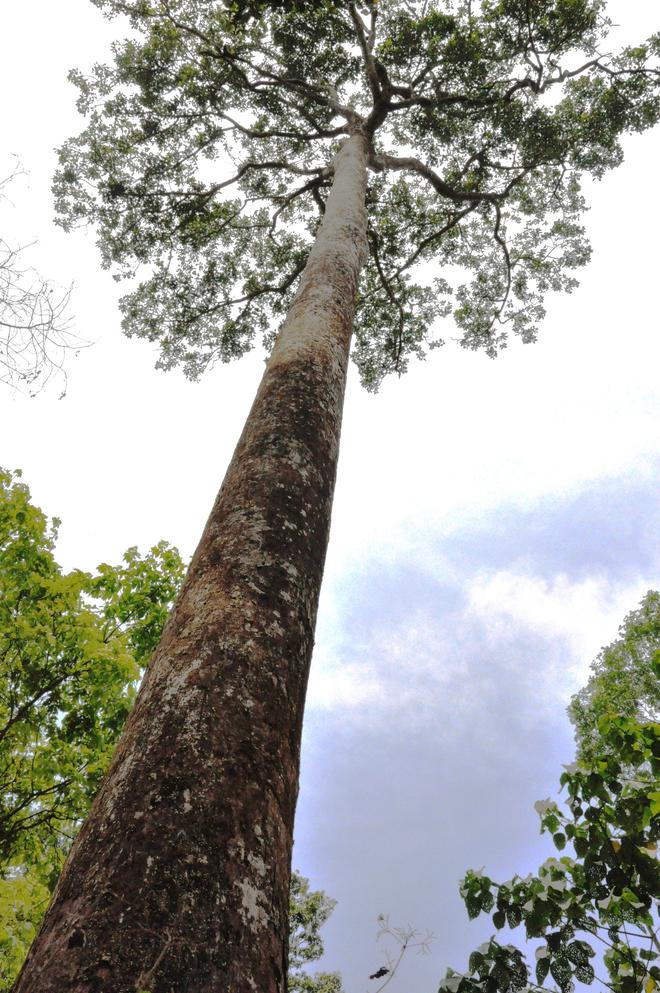Extreme weather events such as cyclones, sudden floods, and heatwaves have been lashing different regions of India over the last few years. In 2021, the Indian Institute of Sciences (IISc) cautioned that by 2050 parts of the Western Ghats would be lost to harsh climatic conditions.
Amid concerns about climate change and its impact on the Sahyadri mountain range, biologists and nature lovers have come up with a pictorial manual to help identify, understand, and conserve the vast flora found in the Karnataka region of the Western Ghats.
Center for Urban Ecology, Biodiversity, Evolution, and Climate Change (CUBEC), at Jain (Deemed-to-be) University, along with the Karnataka State Medicinal Plants Authority, recently launched the book Forest Trees of Central Western Ghats - A Pictorial Field Manual.
Written by Dr. G Ramachandra Rao, Associate Professor, CUBEC, Dr. T.V. Ramachandra, Vishnu D. Mukri, and Dr. M.D. Subash Chandran, the book elaborates on the habitat, ecology, and conservation aspects of the Western Ghats for students, scientists, forest staff and nature lovers.
A field manual for the forests
According to the pictorial manual, the Western Ghats, on account of its exceptional biodiversity coupled with the serious threat of depletion, is considered one of the 36 global biodiversity hotspots.
It harbors over 4,000 species of flowering plants (40% endemics), 330 species of butterflies (11% endemics), 156 species of reptiles (62% endemics), 508 species of birds (4% endemics), 120 species of mammals (12% endemics), 135 species of amphibians (75% endemics) and 289 species of fishes (41% endemics).
Speaking to The Hindu, Dr. G. Ramachandra Rao said that the pictorial manual was developed based on floristic studies in the Uttara Kannada, Shivamogga, and other Western Ghats districts of Karnataka.

“The field manual has been developed keeping in mind the primary role of trees in maintaining the ecosystem and the need to know the tree flora of the Western Ghats so as to conserve the Ghat ecosystem,” he said.
“It delves into selected forest trees, representing different forest types from evergreen to dry deciduous, and diverse habitats from Myristica swamps to rocky terrain. The trees portrayed in the manual have been chosen for their representativeness of ecosystems, their ecological roles in the system, and for their endemism and rarity.”
Keeping it simple
According to Dr. Rao, floristic works in the past have been hard for students and laypeople to understand.
“Classical floristic works such as the Flora of Presidency of Bombay by Cooke T., Flora of Karnataka by C. J. Saldanha, and many more are generally descriptive with complex scientific terminology. They predominantly rely on floral and fruit characteristics and other subtle characters to distinguish closely related species.”
“Amateur nature enthusiasts, students, and field workers often find it difficult to use such floristic works in the field despite their great benefits. Hence our focus here is on cashier field identification techniques based on more obvious, morphological, and vegetative characters, represented pictorially.”
The manual contains 131 forest tree species which are pictorially grouped based on easily identifiable morphological characters. Photographs of bark, twigs, leaves, flowers, fruits, seeds, etc., are provided for easier identification.
Additionally, details of tree phenology, ecology, and threat status along with taluk-wise distribution of tree species (in Uttara Kannada district) are provided.
“While we have tried to cover as many trees as possible, this is not an exhaustive manual. Many tree species have been excluded due to unavoidable reasons. However, this manual gives reasonable assistance in the identification of a large number of trees from this region, particularly from wetter low to mid-altitude forest,” Dr. Rao said.
A 10-year long journey
Dr. Rao joined IISc as he, in his own words, “always wanted to work in the forest” and the institution gave him the opportunity. He travelled across the Western Ghats spending several days in the forest areas over the last 15 years.
“I started understanding the diversity of the Western Ghats and also wanted to understand how the forest functions. So, I started investigation, and did PhD on undisturbed and disturbed forests,” he said.
Somewhere around 2012, he started writing the book along with the others. It took about 10 years to be completed.
Book for free
The book is being made available for free. It’s not on sale for a reason, says Dr. Rao. “As we completed the book, we decided that we did not want to sell the book for a price but give it away to nature lovers. We understand how difficult it is for people to identify the forest.”
“Every year there are new guards, foresters, and other staff appointed by the Karnataka Forest Department, who know very little about the forest and cannot afford to buy a book or manual to understand it. Considering our motive, the Karnataka State Medicinal Plants Authority came forward to publish the book,” Dr. Rao explained.
The book is available for free at Forest Department offices across the State. The manual is also available online on the IISc website.
“This is our small contribution to the world of forests and the Western Ghats,” said Dr. Rao.







